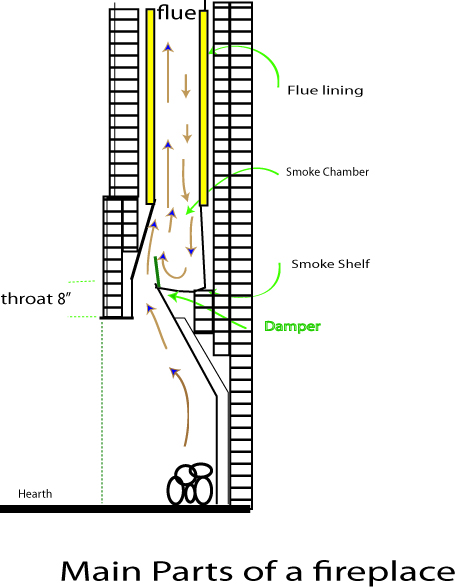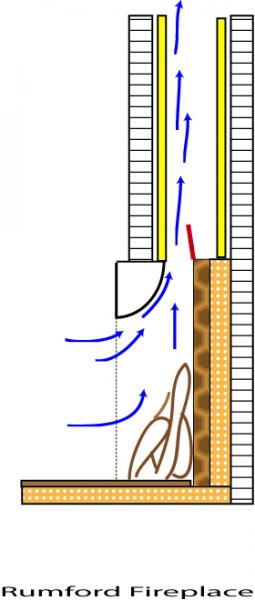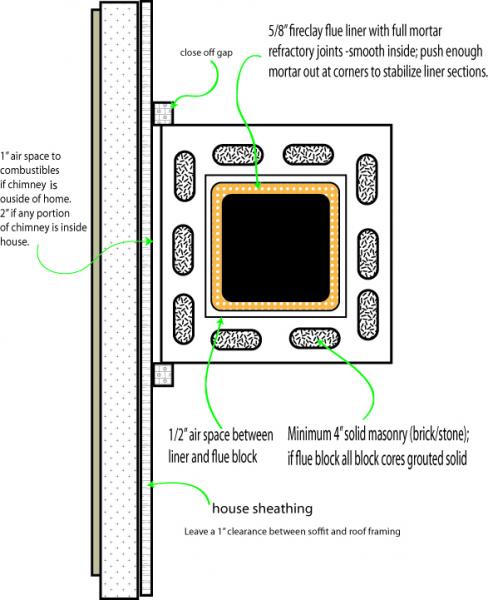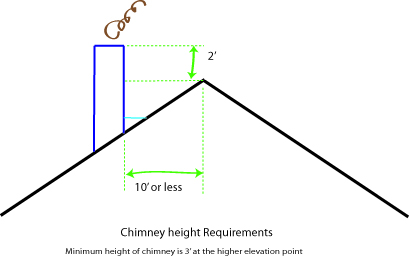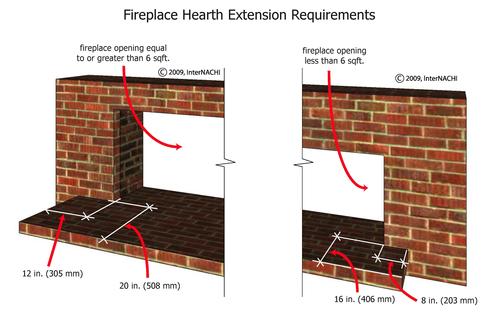- Home - Blue Palmetto Home Inspection of Summerville and Charleston
- Learn About Us and This Charleston Home Inspector
- What's Inspected
- Charleston Lowcountry Inspection Areas (geographic)
- Testimonials
- >>>Blogs (educational)
- Sample Reports & Documents
- Why Get a Home Inspection Report
- Charleston's Top Ten Reasons
- Home Inspector Photo Galleries
- Pricing
- Scheduling and Customer Information
- Home Inspection Authorization Contract
- General Scope of Work (electronic)
- Home Inspection Customer Satisfaction Survey
- Privacy Policy
- Full site
- The Roof Framers Field Manual
Fireplace and Chimney Safety Discussion in the Charleston lowcountry
Submitted by Ray Thornburg on Tue, 04/09/2013 - 16:40
Fireplace and Chimney Safety
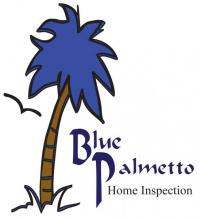
When your home inspector notes a deficiency in your chimney or fireplace it is very important to get a qualified fireplace professional or certified chimney sweep to evaluate and make repairs. Fireplaces and chimneys are complex and it takes special training and knowledge to build and maintain them. This discussion will describe the most common types of wood burning fireplaces and point out typical construction details as well as the most common defects that we find.
There are basically two types of masonry fireplaces. A traditional fireplace has a firebox which is at least 20” deep. These are multipurpose fireplaces designed for a variety of tasks. A rumford has a more narrow firebox (minimum 12”) and is designed more for heating. It is characterized by a rounded throat which many believe draws better than a traditional fireplace. They also tend to reflect more heat back into the room.
At left is a standard fireplace showing how the smoke shelf helps to deflect down drafts. These drawings are for illustrative purposes only. The minimum firebox in this type of fireplace is 20". Click images to enlarge into a new window.
At left is a rumford fireplace. Notice the straight back and the rounded throat. The minimum firebox for a rumford is 12". It is thought that this kind of design reflects more heat back into the room and draws better. A rumford will typically be taller and have a very shallow firebox.
Typical Construction Details
Walls of a chimney with a clay flue lining should be at least 4” thick.
Unlined chimney walls of 4” brick is a defect.
Although unlined masonry chimneys (minimum thickness 8”0) will operate satisfactory a glazed flue lining is recommended.
As a rule, a single flue should be used for only one heating unit.
Corbelling should not exceed a 1” projection for each course.
Joints in the flue lining should be bedded in mortar or fireclay.
At the top the flue lining should extend at least 4” above the top course or capping of cement mortar at least 2” thick.
When several flues are located in the same construction, it is best to extend them to different heights.
Offsets should be limited to 60 degrees.
The side and back walls of the combustion chamber continue up to the level of the damper. These must be lined with firebrick at least 2” thick set in a special clay mortar that will withstand the heat. Total thickness including the firebrick should be at least 8”.
Cross sectional areas of the throat should not be less than that of the flue. Its length should always equal the width of the fireplace opening. Vertical distance of about 6-8”.
Depth of the smoke shelf should not be less than 4” but can be up to 12” or more depending on the depth of the fireplace.
The purpose of the smoke shelf is to help change the direction of downdrafts. It is usually made as wide as possible and curved to reduce turbulence in the air flow.
The smoke chamber extends from the top of the throat to the bottom of the flue. This space helps keep smoke from being forced back into the room by decreasing the force of downdrafts.
Side walls of the smoke chamber are drawn inward typically one foot for every 18” of rise. All surfaces of the smoke chamber should be plastered smooth with at least a ½” of cement mortar.
In order to develop a draft sufficient to draw smoke a fireplace and chimney should be a minimum of 12’ high. A shorter chimney should have a larger flue.
Typical flue area is 1/10th the fireplace opening area for chimneys 20’ or taller.
Proper operation will depend on an adequate flow of air into the building to replace that which is exhausted through the flue.
Combustible material should be kept at least 2’ away from the chimney wall. 1” if chimney is completely outside of house wall.
Chimney should extend at least 2’ above any roof ridge that is within 10’
In the best construction the chimney cap should overhang the chimney about an inch. This will allow water to drip off the cap and not run down the walls of the chimney.
At left shows typical chimney section details. Notice that a little space is left around the flue for expansion and contraction.
Code Rules
· Footing min. 12” thick and 6” beyond all sides.
· Hearth min. 4” thick.
· Hearth extension min. 2” thick.
· No combustible material remaining under hearth or hearth extension.
· If opening is less than 6 sq. ft. min. hearth extension is 16” in front, 8” sides.
· If opening is greater than 6 sq. ft. min. hearth extension 20” in front 12” sides.
· No combustible trim or mantles within 6” of opening.
· Combustible material within 12” of opening is limited to 1/8th inch projection for each inch of clearance from the opening.
· All combustion air from outdoors and intake not higher than firebox. The exterior air intake should be covered by a corrosion resistant 1/4" mesh.
· Smoke Chamber parged smooth.
· Corbelling shall not leave unit cores exposed to inside of smoke chamber.
· When no lining is provided the minimum thickness of smoke chamber is 8”. With lining min. thickness is 6” including the lining.
· Height of smoke chamber from throat to flue shall not be greater than the width of fireplace opening.
· Seismic straps are required at each floor, ceiling and roof level in seismic design category D1, D2. (The Charleston area is D2)
· Factory built fireplaces must be installed in accordance with their listing.
· Factory built fireplaces must be equipped with an exterior combustion air supply unless the room is mechanically ventilated and controlled so that the indoor pressure is neutral or positive.
· Masonry chimneys shall be lined. Minimum wall thickness 4”.
· Firebox minimum distance 20”, Rumford firebox minimum distance 12”
· Spark arester net free area should be minimum 4x the flue area.
Sources: irc 2006 chapter 10
At left is typical roof chimney clearances.
At left courtesy of internachi are typical hearth requirements.
Common Defects
· Chimney Cap Defects- include missing, cracked or rusted cap which can allow moisture intrusion into the chimney causing damage. Also missing spark arrestor cap.
· Needs Cleaning- Heavy creosote deposits can create a chimney fire.
· Abandoned chimney ports- Sometimes ports are covered over with sheetrock or a pie plate cover which may allow leakage of flue gasses.
· Damaged, Blocked, Deteriorated chimney flues or missing dampers.
· Dead End Flues- This is when a flue vent from another appliance enters an abandoned fireplace at the bottom. These types of flues can easily be clogged with debris. A small appliance flue may not be able to develop a proper draft in a larger chimney causing unsafe flue gasses to spill backwards. Acid produced by the gas appliance exhaust is corrosive to masonry chimneys which will deteriorate them.
· Unlined chimney flue in a single wythe brick chimney- A fire and flue gas leakage hazard.
· Rust and corrosion- Moisture intrusion can cause dampers to rust through and the tops of metal prefab fireplaces to rust through.
· Unsafe clearances to combustibles.
· No cricket on backside of chimney over 30” wide or not flashed correctly- A cricket is a type of rain diverter that diverts rain to either side of chimney. A missing cricket can allow moisture intrusion and damage.
· Cracked or missing refractory panels in pre-fabricated fireplaces.
On older homes failing mortar both inside the firebox and outside is a concern. Failing (soft) mortar inside the firebox is common in older homes and can be repaired by a professional (special mortar is used).
Now let's take a look at some of the things we see out in the field.
Lack of a cricket (a type of rain diverter) on the backside of this chimney and improper flashing is causing moisture intrusion. Even a small amount of moisture will damage sheathing over a period of time.
A cracked cap like this one can allow moisture intrusion into the chimney. Moisture can freeze and expand causing more damage. The spark arrester is in good condition however.
Mortar on this chimney is in bad shape and is failing. Mortar like this is easily probed with a screwdriver and crumbles easily between the fingers.
This very old chimney is down right dangerous. Loose bricks, no chimney cap, no rain cap or spark arrester , not lined. This one was still being used to vent a gas appliance which can produce corrosive gases which will further deteriorate the chimney.
The inside of this smoke chamber was improperly done. Open cores of brick can be seen, improper corbelling and it is not plastered smooth. Open cores can allow creosote to build up.... a chimney fire hazard. Lack of parging could allow flue gasses to escape into unwanted areas.
This manufactured prefabricated fireplace was missing a lever to open the damper.
This exhaust vent from a gas furnace is actually entering the bottom of a hearth in an old fireplace. As you can see there is no support for the fireplace or hearth so it is in danger of collapse. Also a vent at the bottom like this can become easily clogged by falling debris causing the backup of flue gasses. Flue gasses from a gas furnace is corrosive so will deteriorate the chimney further.
Cracked or missing refractory panels can be replaced by a qualified fireplace professional. Small hairline cracks can be expected but larger ones like these or missing panels need to be corrected.
View from underneath a prefabricated fireplace in the crawl space. There is actually no support for this fireplace provided. Looks like it might have been an after thought. Visible on the right is a brick the masons stuck under that side to help support it.
A chimney in a valley like this is not a good idea. Although this chimney was not leaking.... installations like this are problematical. Leaves and debris can be trapped behind the chimney causing a maintenance and possible premature shingle failure at that location.
Ideally water should not be allowed to puddle on a chimney cap. You can see how this one is starting to rust at the puddle locations. A potential moisture intrusion hazard.
A chimney on an outdoor barbecue like this is just cosmetic. It will never draw smoke.
Rust on a damper like this is a sign moisture is getting in around the flue pipe.
If you look carefully up this prefab fireplace you can see the osb roof sheathing. That's right. This fireplace has no chimney! They took the pipe off during a re-roof and..... well ....... just don't start a fire! An unsuspecting person would not know this fireplace didn't have a chimney. Extremely dangerous! See-it does pay to have a home inspection.
A rusted spark arrestor screen like the one in the photo at left can allow vermin, bees, into the home and chimney, It is also a hazard because the inner pipe is not secure at the top. Metal chimney pipes should be braced if they stick above the roof too far like this one.
This picture show a close up view of the combustion air vent for a prefab fireplace. The screen is rusted and can allow wasps, insects in. The screen openings should be no more than 1/4" and not too small either. This may be a minor thing but I have seen a large hive of honey bees take advantage of a stuck open back draft damper on a bathroom vent. The honey isn't quite as sweet if you have to take down the sheetrock in the ceiling of your bathroom to remove the hive.
This prefab fireplace is in good condition. No cracks in the refractory panels.

